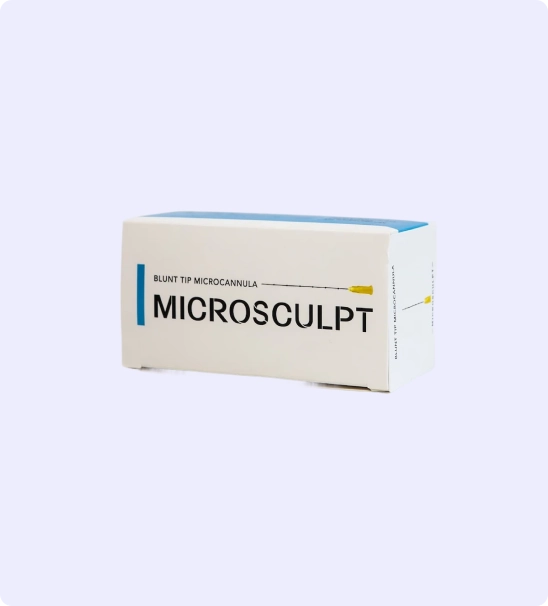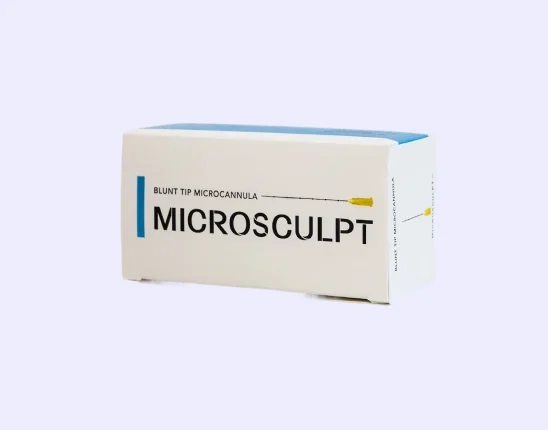Microcannula use has steadily risen with many cosmetic procedures, and more dermatologists and surgeons should incorporate their use with their treatments. Because patients are also able to do their own medical research, medical professionals need to be prepared with the possibility that their charges would ask for microcannula use.
But what exactly is the benefit of using the microcannula? The most significant benefit is that it makes medical treatments relatively painless for the patient, and easier for the injector. Other benefits can include the reduced likelihood of postoperative care and fewer complications during the procedure itself. With a skilled injector, the microcannula technique can help solve some long-standing problems in the field of cosmetic procedures.

Injections Your Patients Will Love! Code “20OFF” Takes 20% off Your First Order!
Microcannulas are a tool that every great injector must master. Patients want quick results with no downtime. Our microcannulas are high quality and a fraction of the price of our competitors!
You can create an account here.
How Microcannula Use Improves Treatments Compared To Needles
Microcannulas share a similar design to the traditional sharp-tip needle, but with a blunt point instead of a beveled one. Some microcannulas can also flex slightly once they’ve gone through the dermal layer. On average, they’re longer than hypodermic needles but may have thinner gauges.
There are two main benefits to using the microcannula technique with any cosmetic procedure:
1. Less pain and other side effects for the patient
One of the major drawbacks to using traditional sharp-tip needles is that they’re built to pierce the skin to get to the muscle and tissue underneath. While it is more or less a direct method to administer medications and products like dermal fillers, this process can cause considerable pain and trauma to the patient’s skin.
Swelling, bruising, skin discoloration, and inflammation are all side effects encountered with traditional needle use and can cause severe discomfort and pain in the patient. It can also carry the risk of puncturing a vein or damaging the vascular system with enough injections, which can result in bleeding and other serious complications.
Because the microcannula has a blunt tip, it’s able to push, not pierce through skin, muscle, and tissue. Not only does this avoid any damage to the subdermal layer beyond the initial entry point, but it can also nudge aside any major vascular structures encountered during the injection.
Less pain for the patient means that there’s less reliance on anesthesia during the procedure, and the reduced trauma lowers any potential need for postoperative aftercare. This is especially crucial for procedures that involve dermal fillers since patients will most likely want to return to their usual routines soon after the treatment is done.
2. A more flexible tool for the injector
Unlike traditional sharp-tip needles, a microcannula can travel to adjacent sites once the initial insertion point has been made. This allows surgeons and dermatologists to reach normally difficult areas like the lips, around the nose, or under the eyes. And because microcannulas leave less trauma on the skin as it travels through the dermal layer, injectors can operate them with relative ease.
No longer needing multiple injection sites also means that doctors won’t need to contend with issues like injection reactions. This flexible approach allows the microcannula to be used in a variety of procedures, from dermal fillers to liposuction. A skilled surgeon or injector can even combine the use of traditional needles with cannulas for even better results.
However, the caveat with this approach is that the injector has to be trained and certified using a microcannula. Because of the relatively thin and flexible shaft, an injector has to have fine control over how they push the cannula into the skin. Too hard will most likely break the cannula, but not enough force can also mean that the tip may not go to the intended spot.
Injectors will also have to keep an eye on the fluid’s travel through the microcannula. A thin shaft and a longer needle mean that the rheology of any product – though especially dermal fillers – need to be considered before using them with microcannulas.
Buy High-Quality Medical Tools And Devices From FACE Medical Supply
-
 23 gauge 50 mm (2 inch) Microcannulas
23 gauge 50 mm (2 inch) Microcannulas -
 22 Gauge 100 mm (4 inch) Microcannulas.
22 Gauge 100 mm (4 inch) Microcannulas. -
 27 Gauge 38 mm (1.5 inch) Microcannulas
27 Gauge 38 mm (1.5 inch) Microcannulas -
 25 Gauge 38 mm (1.5 inch) Microcannulas
25 Gauge 38 mm (1.5 inch) Microcannulas -
 30 Gauge 25 mm (1 inch) Microcannulas
30 Gauge 25 mm (1 inch) Microcannulas -
 18 Gauge 100 mm (4 inch) Microcannulas
18 Gauge 100 mm (4 inch) Microcannulas -
 25 Gauge 50 mm (2 inch) Microcannulas
25 Gauge 50 mm (2 inch) Microcannulas -
 21 Gauge 50 mm (2 inch) Microcannulas
21 Gauge 50 mm (2 inch) Microcannulas -
 21 Gauge 70 mm (2.75 inch) Microcannulas
21 Gauge 70 mm (2.75 inch) Microcannulas
While microcannula use may not be the best method for all medical treatments, wider adoption of its use has definite advantages for doctors and patients alike. Able to handle both medical and cosmetic procedures, microcannula use can significantly widen the suite of services that any practice has to offer.
With several years of experience in helping our clients source high-quality medical devices like microcannulas, FACE Medical Supply is a proud partner of many cosmetic practices that want to use the latest medical tools without worrying about their bottom line. As a long-time procurement expert of tools like microcannulas, we make medicine more accessible.
For more information about us and the different products we offer, contact us today.
Read more: What You Need To Know About Plasma Pen vs. Botox







